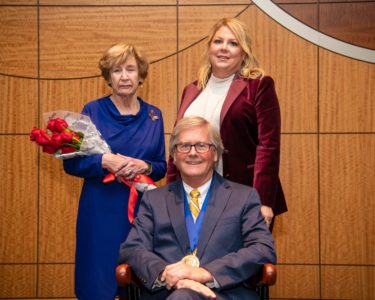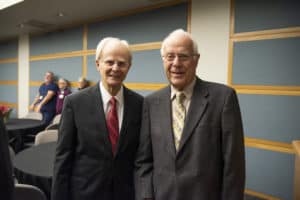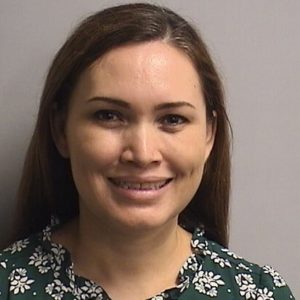Researchers at the University of Arkansas for Medical Sciences (UAMS) have found a potential link between PTSD in combat veterans and changes in thyroid function.
Spyridoula Maraka, M.D., is an assistant professor in the Division of Endocrinology and Metabolism in the Department of Internal Medicine in the UAMS College of Medicine and staff physician at the Central Arkansas Veterans Healthcare System (CAVHS). She and her research fellow, Freddy J.K. Toloza, M.D., presented their findings at the annual meeting of the American Thyroid Association. Their research was also featured in the Endocrine Daily Briefing and Clinical Endocrinology News.
Post-traumatic stress disorder (PTSD) affects 6-9% of the U.S. population but is closer to 20% among veterans. People with PTSD have difficulty with physical and emotional symptoms after witnessing a life-threatening or terrifying event. PTSD can linger for years, with triggering events bringing back unwanted memories or symptoms.
“Treatments exist, but there is a lot of room for improvement,” Maraka said. “Researchers have long noticed a potential link between endocrine disorders like thyroid disease and psychiatric conditions like depression and anxiety. Though the suggestion of a link is controversial because it has not been completely explained, the goal of our research was to explore this connection by looking at thyroid function and PTSD.”
Maraka, Toloza, and collaborators performed a meta-analysis, which is a type of research in which no new experiments are performed, rather researchers take the results of many other studies, combine them and look for patterns. In this case, they found 10 previous studies about PTSD and thyroid function involving 674 participants.
For their first analysis of the data, they found that the patients with PTSD had higher levels of the thyroid hormone triiodothyronine (T3) than those without PTSD, or the control group. They decided to dive deeper into the data, and a second analysis compared people with combat-related PTSD to the control group separately from people with other PTSD types.
“What we found surprised us,” Maraka said. “The correlation was the strongest between T3 hormonal levels and the combat-PTSD group. In fact, once we looked at the data in this way, it became clear that the combat group was the main driver of the correlation. The combat group continued having higher T3 levels compared to the control group, but people with non-combat-PTSD were not different than the control group.”
Maraka stressed that the finding is merely an association and not proof of a cause. However, it does tell researchers that they should investigate further in this area. A medication that could target one or both issues could emerge as a more effective treatment for PTSD than those currently available. For her next step, Maraka plans to conduct a study testing thyroid markers in veterans with combat-related PTSD.
“This could teach us more about how the body adapts to stressful situations, both mentally and hormonally,” Maraka said. “It’s possible that there is a difference between PTSD that develops from long-term exposures to life-threatening stress, like combat, and brief exposures, like a car accident or crime. Understanding more about these differences could lead us to more tools for treating them.”
Also assisting with the project was Richard R. Owen, M.D., a professor at UAMS and associate chief of staff for research at CAVHS and other members of the UAMS Division of Endocrinology and Metabolism.



























